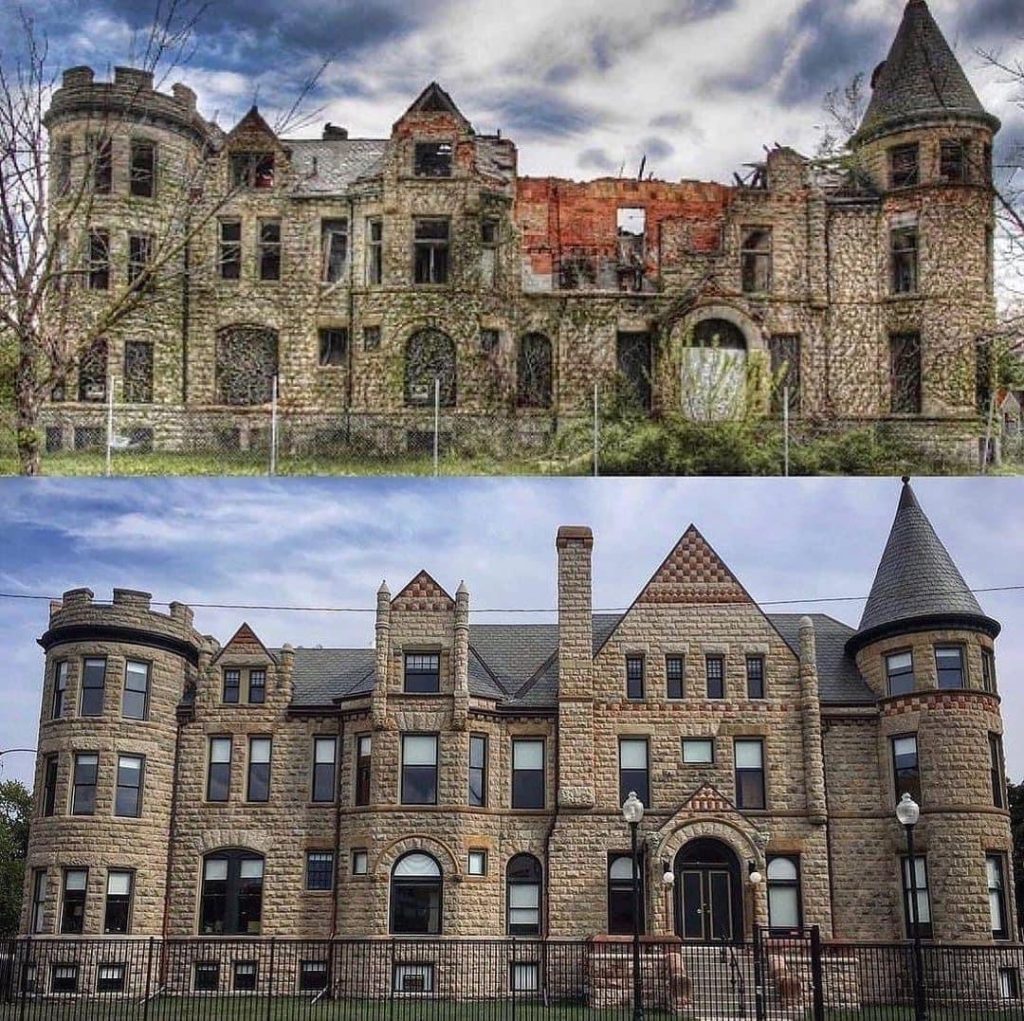

DETROIT — Renovations of the iconic James Scott Mansion in Detroit’s Cass Corridor are nearly complete, and the building is being prepared for a December reopening as an apartment complex. The 19,000-square-foot building at 81 Peterboro was vacant for at least 40 years until developer Joel Landy stepped in to prevent the demolition of the historic structure.
 The owners never paid taxes, but at that time, the city had no ordinance to sue anyone… In about 1986, I encouraged the city legal department to write that ordinance,” Landy said.The city later sold him the property.”I was ready to get the permit, then 2008 came and the world collapsed,” he said.
The owners never paid taxes, but at that time, the city had no ordinance to sue anyone… In about 1986, I encouraged the city legal department to write that ordinance,” Landy said.The city later sold him the property.”I was ready to get the permit, then 2008 came and the world collapsed,” he said.
In 2014, Landy worked with Capital Impact Partners, who helped fund the project, but illness delayed the project until 2016.The restoration and redevelopment of the building cost about $5.9 million, according to Elizabeth Luther, program manager for Capital Impact Partners.The project will create one commercial space and 27 one-bedroom apartment units averaging 570 square feet, with rent averaging $1.50 to $1.70 per square foot.
Nine units will feature balconies with French doors. Before the restoration began, the building was in poor condition and was in dire need of restoration, with some calling for demolition. But for years, Landy pushed to preserve the building, aiming to bring the more than century-old structure back to how it was originally built. The mansion once belonged to an eccentric socialite who loved to gamble and is best known for the ornate James Scott Memorial Fountain on Belle I, which was built using money from his will.He was the rich kid heir from the Scott fortune,” Landy said. “People loved him. He gave lots of money out to neighbors and poor people, but he didn’t get along with the government at all. Ten years after he died, someone bought the house… built an addition on the back and renamed it Scott Apartments, which it remained until it was closed roughly in 1980.
”As downtown and Midtown have seen a spike in residential and commercial rental rates, Landy, who considers himself a “community developer,” aimed to create lower-cost units.”My first motivation here was to create a place where myself and my friends could live,” he said. “Many of my friends are artists and other creative types who don’t have a lot of money.
“Unfortunately, when I’m gone, probably someone will start charging higher rents.
The eye-catching structure dates back to the 1800s, when Woodward Avenue was lined with large mansions, Landy said. People involved in business and government-related fields often lived in these homes, but as soon as immigrants moved in to work in Detroit’s factories, homeowners converted their space to house more people, he added.

“The people that lived in these homes saw they could make a tremendous amount of money converting their houses to rooming houses,” Landy said. “They converted their houses to hotels, then moved to the suburbs, which were Indian Village and Boston Edison, and areas that were three or four miles outside of the city limits.”Landy was also involved in renovating the Addison Building, the Burton Theatre, and the Leland Lofts.In 2014, the developer was approved for $2.6 million in state historic and brownfield redevelopment tax credits.

